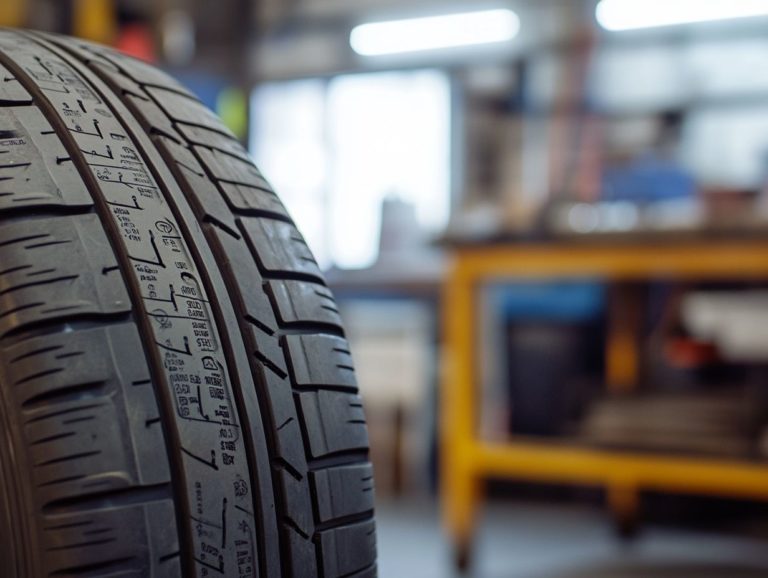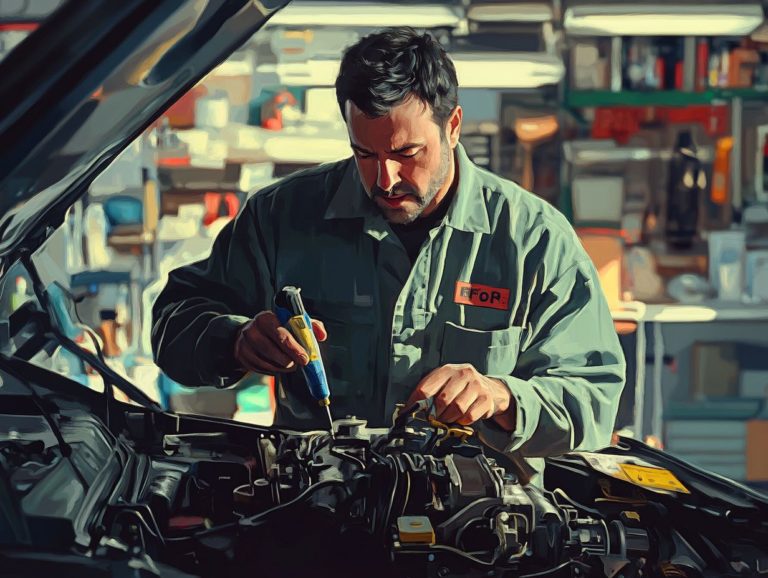How to Prepare Your Car for Winter?
As winter approaches, it is essential to ensure your car is ready for the season, prioritizing both safety and performance. The cold weather presents unique challenges, including icy roads and frigid temperatures. Consequently, winter car preparation is crucial.
This article explores the hazards you may encounter, outlines vital maintenance tasks like checking tire conditions and fluid levels, and provides tips for safe driving in winter conditions. A comprehensive checklist will help you get your car winter-ready, giving you peace of mind throughout the colder months.
Contents
- Key Takeaways:
- Why Winter Car Preparation is Important
- Must-Do Winter Car Maintenance Tasks
- Winter Driving Tips
- Preparing Your Car for Extreme Winter Conditions
- Winter Car Care Checklist
- Your Winter Car Care Questions Answered!
- What are some important steps to prepare my car for winter?
- How often should I check my tire pressure during the winter?
- Do I need to switch to winter tires?
- Should I top off my car’s fluids before winter?
- How can I protect my car’s paint from winter weather?
- Is it necessary to have an emergency kit in my car during winter?
Key Takeaways:
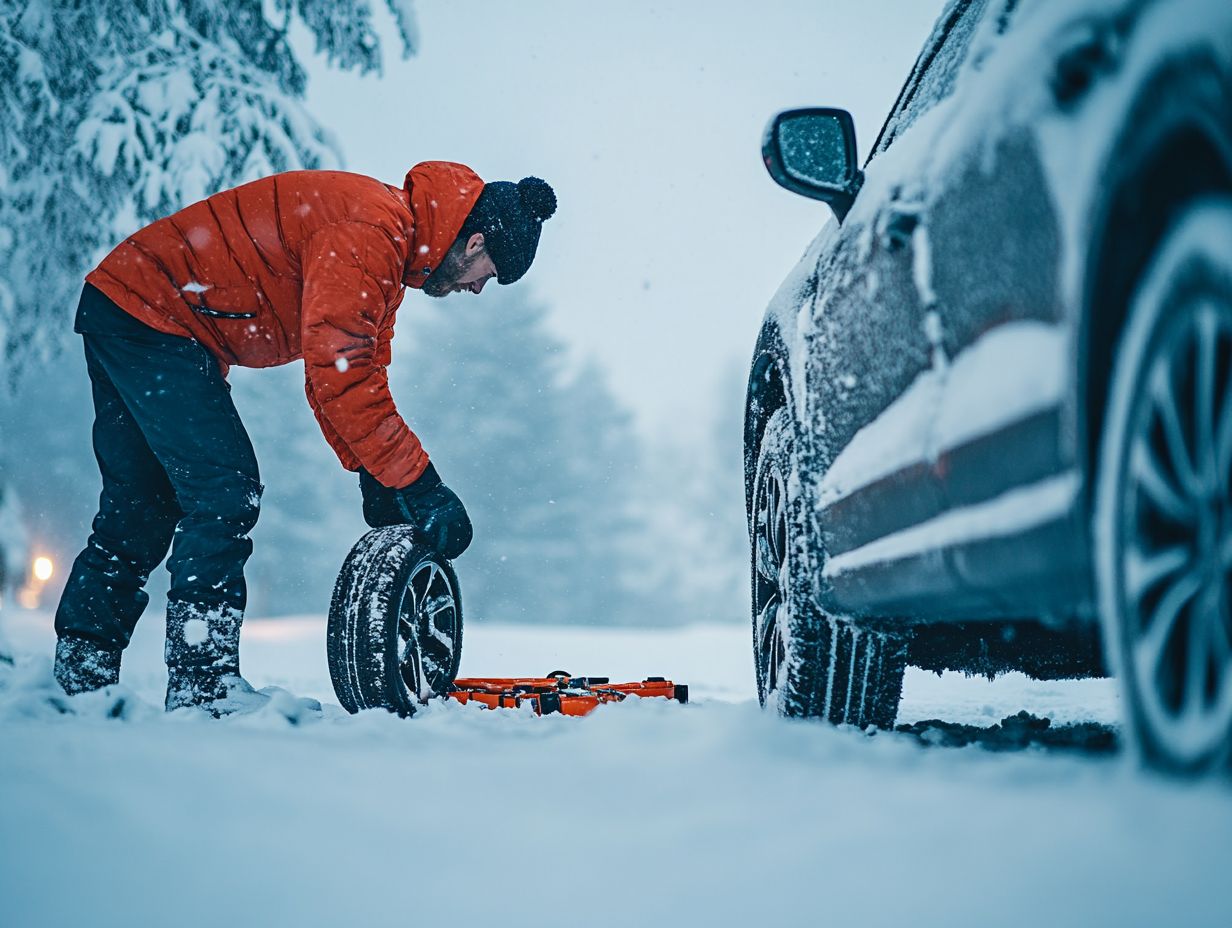
Preparing your car for winter is vital. It can prevent hazards on the road and keep you safe! Regular check-ups and maintenance of tires, brakes, fluid levels, and battery are essential for smooth winter driving. Always follow safe driving practices and keep emergency supplies on hand to be prepared for extreme winter conditions while on the road.
Why Winter Car Preparation is Important
Preparing your car for winter is essential for the best performance and safety during harsh months. As temperatures drop, your vehicle becomes vulnerable to cold weather issues like battery failures, tire malfunctions, and reduced visibility due to snow and ice.
A well-prepared car enhances your driving comfort and minimizes risks associated with winter conditions, ensuring the safety of you and your passengers. This preparation involves thorough maintenance and inspections of various systems to guarantee your car is ready to tackle the challenges of winter driving.
Potential Hazards and Risks
Winter driving brings numerous hazards that can impact your vehicle’s performance and your safety. Treacherous road conditions from snow and ice are just the beginning.
One alarming threat you might encounter is black ice, a near-invisible layer that forms when temperatures drop and moisture freezes, often sending vehicles into uncontrolled skids. Reduced visibility from heavy snowfall or freezing fog can further hinder your ability to see and react, increasing the risk of accidents. According to the National Highway Traffic Safety Administration, nearly 25% of weather-related crashes occur in winter conditions, emphasizing the importance of staying alert.
To navigate these challenges safely, keeping your vehicle well-maintained is essential. Ensure your tires have adequate tread and check your battery life regularly. This preparation can make all the difference when facing winter s unpredictable nature.
Must-Do Winter Car Maintenance Tasks
To ensure your vehicle runs its best during the winter months, prioritize these vital maintenance tasks. Focus on critical components like tires, the battery, and fluid levels.
Tires and Brakes
Tires and brakes are your most crucial allies for safety and performance on winter roads, making regular checks and maintenance essential.
As temperatures dip, equipping your vehicle with proper winter tires featuring adequate tread depth is vital. These tires provide the traction needed on icy surfaces, allowing you to navigate with confidence. A well-maintained tread channels away snow and slush, enhancing grip in challenging weather conditions.
Routine brake inspections and necessary adjustments are critical for maintaining stopping power, especially when roads are slippery. Remember, cold temperatures significantly impact tire pressure; a drop of just one PSI for every 10 degrees Fahrenheit can lead to underinflation, putting your safety at risk.
Therefore, ensuring that both your tires and brakes are in optimal condition is not just a precaution it’s a necessity for safe winter driving.
Fluid Levels and Battery

Maintaining fluid levels and a healthy battery is crucial for winter car care. This helps your vehicle operate smoothly and safely in cold weather.
As the temperatures drop, the thickness of your antifreeze coolant can change. It’s vital to check its levels to prevent engine overheating or damage from freezing. Regularly assessing the quality of your oil is equally important; it protects crucial engine components from wear and tear during harsh conditions.
Don’t overlook the importance of effective windshield wiper fluid. It’s key for maintaining visibility during bad weather. Keep a close watch on your battery’s health. Cold temperatures can significantly reduce performance, risking failure if neglected. Check for corrosion around the battery terminals and ensure fluid levels are adequate. This way, you won’t find yourself stranded in freezing conditions.
Winter Driving Tips
Navigating winter roads requires a set of carefully considered driving tips and strategies that prioritize safety and comfort. By understanding how to adapt to these challenging conditions, you can enhance your driving experience and ensure you arrive at your destination with confidence.
Safe Driving Practices
Adopting safe driving practices in winter is crucial for navigating challenging conditions and minimizing the risk of accidents on snow and ice-covered roads.
Focus on smooth acceleration and braking to maintain control. Avoid sudden movements that could lead to skids. If you begin losing traction, stay calm and gently steer in the direction you want to go. Use light braking as necessary.
Good visibility is just as important. Ensure your headlights are functioning properly and your windshields are clear. When faced with tough winter conditions, like heavy snow or black ice, experience becomes invaluable. Knowing these environments can help guide you toward better judgment and safer decisions on the road.
Emergency Preparedness
Being prepared for emergencies while driving in winter can make a significant difference. Think of having a well-stocked emergency kit as your lifeline during unexpected situations, like getting stranded or facing severe weather.
Include essential items in your kit, such as:
- Keep thermal blankets to help retain body heat.
- Use flares to boost visibility in low light.
- Pack non-perishable food to stay nourished.
- Store ample water to stay hydrated.
These items are key to staying safe and comfortable during winter s toughest moments! Taking a comprehensive approach to preparedness emphasizes the necessity of having these essentials readily available.
Store your emergency kit in an easily reachable spot. This way, it becomes a reliable resource when you need it most.
Preparing Your Car for Extreme Winter Conditions
Preparing your car for extreme winter conditions is essential to ensure it can withstand the harshest of weather. Subzero temperatures, heavy snowfall, and icy roads can significantly impact performance and safety.
Taking the time to equip your vehicle for such challenges can make all the difference in driving confidently through winter’s worst.
Additional Steps for Harsh Winter Weather
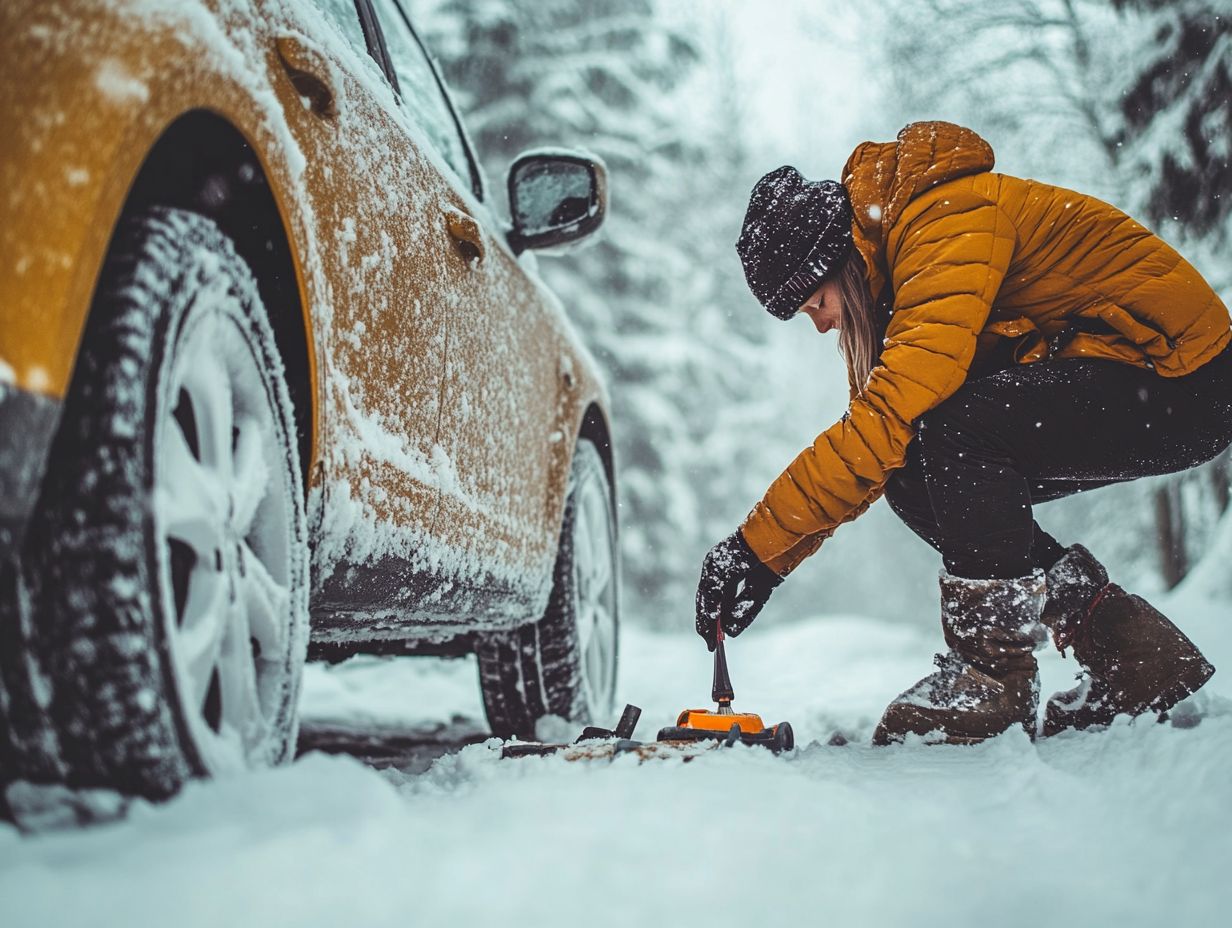
Besides the usual winter maintenance tasks, taking a few extra steps can dramatically enhance your vehicle’s ability to handle the rigors of harsh winter weather.
Applying a rubber protectant to your wiper blades ensures clearer visibility during snow and rain while also extending their lifespan. Check your defrosters and heating systems, as they play a crucial role in keeping you comfortable and speeding up the defrosting process on your windows.
Ensure that your exhaust system is clear to prevent dangerous situations caused by carbon monoxide buildup. These proactive measures enhance your safety and provide a more secure driving experience during severe winter conditions.
Winter Car Care Checklist
A comprehensive winter car care checklist is an invaluable resource that ensures your vehicle is ready to tackle winter’s toughest challenges. This checklist covers all the basic car care and safety tasks, giving you peace of mind as you navigate icy roads and frigid temperatures.
Summary of Key Tasks
Key tasks for winter car maintenance focus on ensuring your safety and optimizing your vehicle’s performance. They prepare you for the distinct challenges that winter weather presents.
These essential tasks include:
- Checking your tire tread depth and pressure
- Inspecting your battery and antifreeze levels
- Replacing your windshield wipers if needed
Each of these components is vital for maintaining control and traction on slippery roads. They also enhance the overall comfort of your driving experience.
Making sure your vehicle’s lights are functioning properly is crucial for visibility during the shorter days of winter. Following these maintenance practices reduces the risk of breakdowns and accidents, making your winter journeys more manageable and secure.
Your Winter Car Care Questions Answered!
What are some important steps to prepare my car for winter?
To prepare your car for winter, check your tire pressure, replace old windshield wipers, test your car battery, and ensure your heater and defroster are working properly. For more detailed advice, refer to this guide on how to prepare for seasonal vehicle maintenance.
How often should I check my tire pressure during the winter?
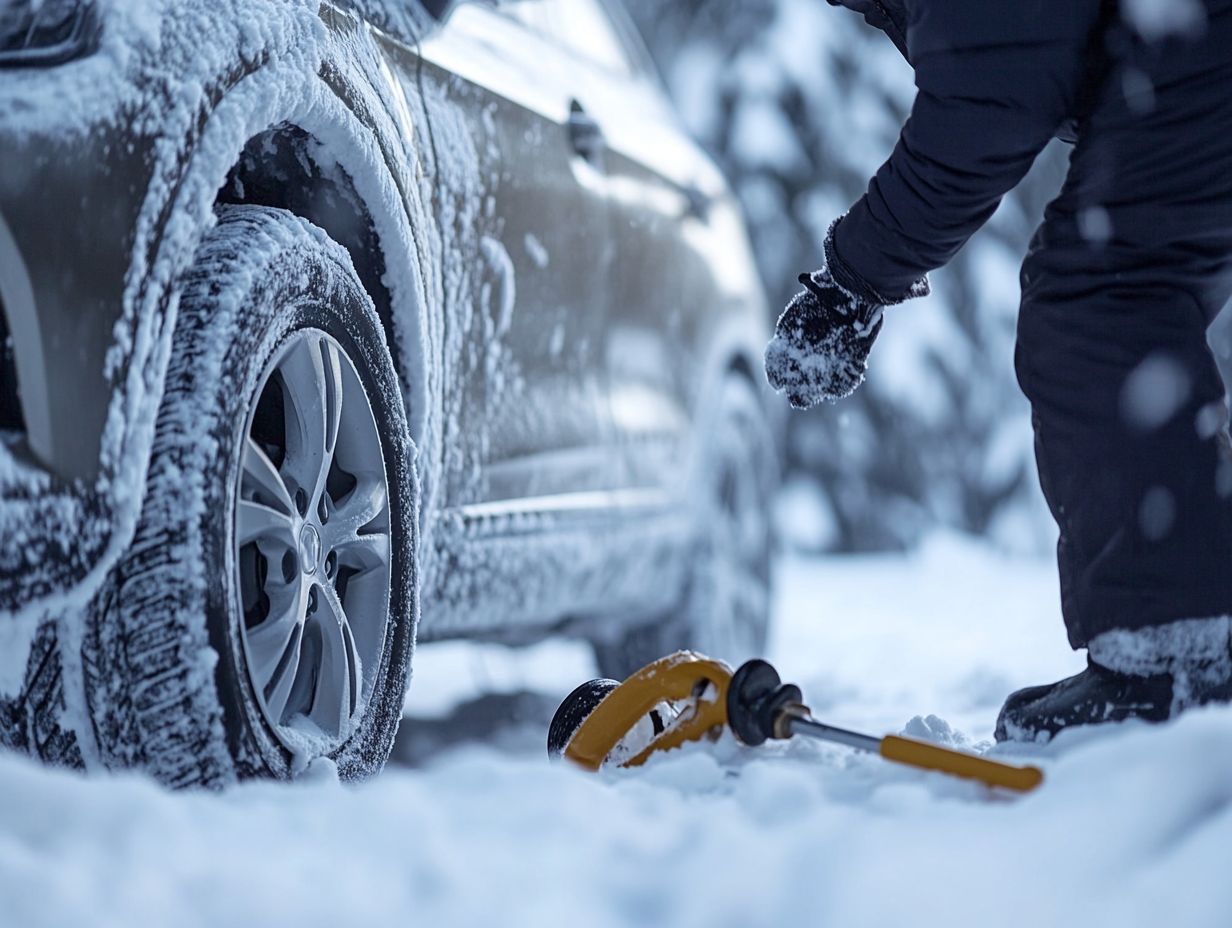
Check your tire pressure at least once a month during the winter. Cold temperatures can cause the air pressure in your tires to decrease.
Do I need to switch to winter tires?
Switching to winter tires is not always necessary, but it is highly recommended if you live in an area with heavy snow or icy roads. Winter tires provide better traction and handling in these conditions.
Should I top off my car’s fluids before winter?
Yes, checking and topping off your car’s fluids before winter is important. This includes antifreeze, windshield wiper fluid, and oil. Cold temperatures can cause these fluids to thicken and become less effective if they are not at the proper levels.
How can I protect my car’s paint from winter weather?
To protect your car’s paint from salt and other harsh winter elements, apply a coat of wax before the winter season. Washing your car more frequently during winter helps remove any salt or dirt buildup.
Is it necessary to have an emergency kit in my car during winter?
Yes, always have an emergency kit in your car during winter. This kit should include items such as a flashlight, jumper cables, blankets, and non-perishable snacks in case of an emergency on the road.
Don’t wait check your car today or schedule a maintenance appointment!
Summary: Proper winter car care is essential to ensure your safety and vehicle performance. Being proactive about maintenance can significantly reduce the risks you face on the road during winter.




